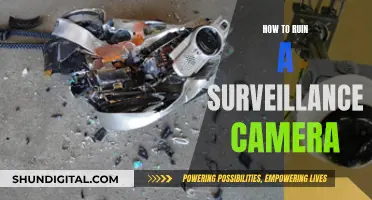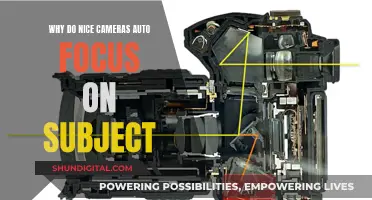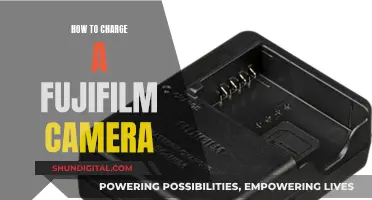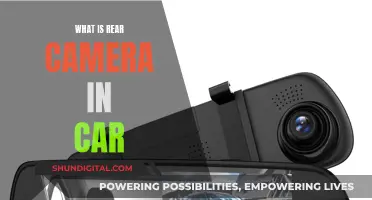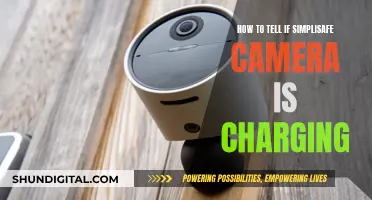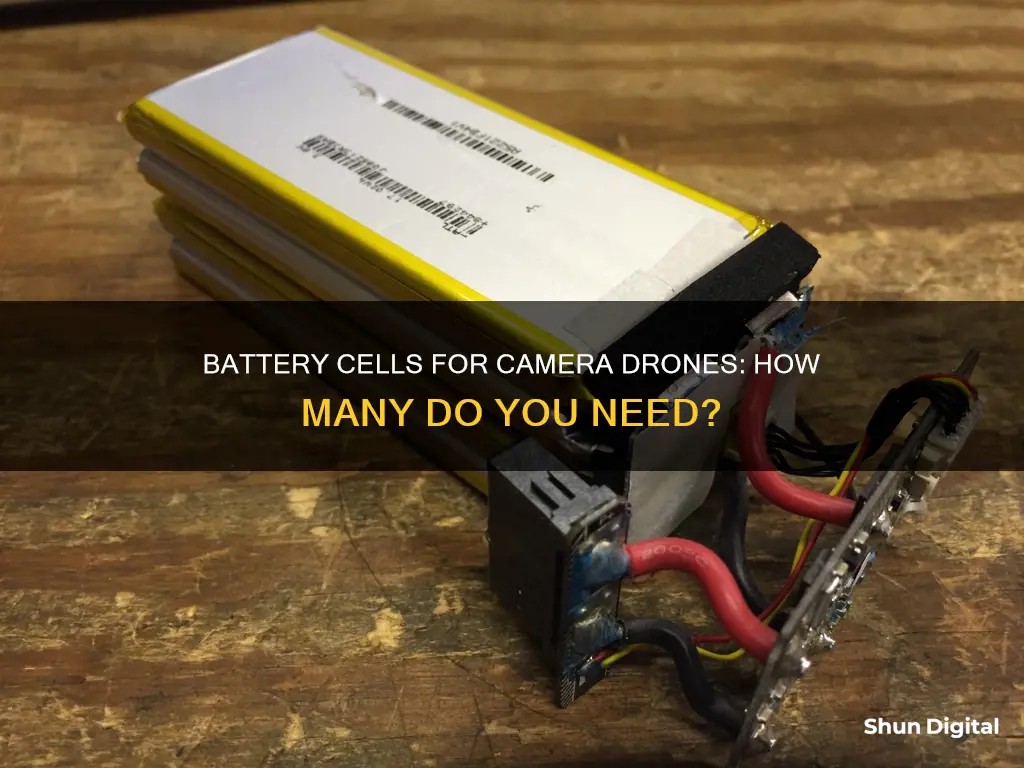
Camera drones require batteries with a high energy density to power their various components. The most common type of battery used in drones is the lithium-polymer (LiPo) battery, which offers a good balance between energy density and discharge rate. LiPo batteries are composed of multiple cells, each with a nominal voltage of 3.7V, and they are connected in series to increase the overall voltage. The number of cells in a LiPo battery is indicated by the 'S' rating, with a 4S battery having four cells and a nominal voltage of 14.8V.
When choosing a LiPo battery for a camera drone, it is important to consider factors such as voltage, capacity, weight, and discharge rate. Voltage affects the speed of the drone's motors, with higher voltages resulting in faster motor speeds. Capacity, measured in milliamp hours (mAh), determines how long the battery will last, with higher capacities providing longer flight times at the cost of increased weight. The discharge rate, or C-rating, indicates how quickly the battery can safely discharge, with higher C-ratings offering better performance.
In addition to these factors, it is crucial to prioritize battery safety when operating a camera drone. LiPo batteries can pose safety risks if not handled correctly, and it is important to follow safe charging and storage practices to prevent overheating or fires. Overall, selecting the right battery for a camera drone involves finding a balance between performance, flight time, and safety considerations.
What You'll Learn

Lithium-ion vs. lithium-polymer batteries
When it comes to choosing the right battery for your drone, there are a few things to consider, such as voltage, capacity, weight, and discharge rate. The most common batteries used in drones are lithium-based, specifically lithium polymer (LiPo) batteries. However, there are two types of lithium batteries that are often compared: lithium-ion (Li-ion) and lithium-polymer (Li-Po). Here's a detailed look at the differences between these two battery types and how they apply to camera drones.
Chemistry:
The main difference between Li-ion and Li-Po batteries lies in their chemical composition, specifically the electrolyte that separates the positive and negative electrodes. Li-ion batteries use a liquid chemical electrolyte, such as ethylene carbonate or diethyl carbonate. On the other hand, Li-Po batteries use a solid, porous, or gel-like polymer electrolyte. This gives Li-Po batteries their name, as "polymer" refers to this unique electrolyte structure.
Shape and Flexibility:
The liquid electrolyte in Li-ion batteries restricts them to a mostly rectangular shape. In contrast, Li-Po batteries offer more flexibility in terms of shape and design. They can be made into various shapes, making them suitable for devices that require custom battery configurations, like drones.
Energy Density:
Li-ion batteries typically have a higher energy density, which means they can store more energy in a smaller space. This makes them attractive for devices where space is limited, like smartphones. However, it's important to note that higher energy density can also contribute to safety concerns, as it increases the potential for overheating and combustion if the battery is damaged.
Safety:
While both types of batteries are generally safe, Li-Po batteries are considered slightly safer due to their lower risk of electrolyte leakage. The solid or gel-like electrolyte in Li-Po batteries reduces the chances of leakage, which can lead to thermal runaway and fires. However, it's important to note that both types of batteries can be prone to overheating and combustion if not handled properly or if they become damaged.
Lifespan and Cost:
Li-ion batteries typically have a longer lifespan and are less expensive to produce. They also don't suffer from the "memory effect," where batteries become harder to charge over time. Li-Po batteries, on the other hand, have a shorter lifespan and are more costly to manufacture. This is a significant consideration, especially for cost-conscious consumers or those looking for long-lasting batteries.
Application:
Li-ion batteries are widely used in various electronic devices, from smartphones to laptops, due to their high energy density and low cost. Li-Po batteries, on the other hand, are often chosen for applications that require custom battery shapes, like drones, or for devices that utilize fast-charging technologies.
Choosing the Right Battery for Your Camera Drone:
When selecting a battery for your camera drone, there are several factors to consider:
- Voltage: Voltage will impact the speed of your drone's motors and overall performance. Most drone batteries are sold in configurations like 2S, 3S, or 4S, indicating the number of cells connected in series to increase voltage. For example, a 4S battery has four cells and provides a voltage of 14.8V.
- Capacity: Battery capacity, measured in milliamp hours (mAh), determines how long your drone can stay in the air. Higher capacity means longer flight times but also heavier batteries. It's important to strike a balance between performance and weight.
- Weight: Heavier batteries can affect the agility and maneuverability of your drone. Consider the weight of the battery in relation to the overall weight of your drone to ensure optimal performance.
- Discharge Rate: The discharge rate, or C-rating, indicates how quickly the battery can safely discharge. A higher C-rating means faster speeds and more power to the motors. This is particularly important for racing drones or applications that require quick bursts of speed.
In summary, both Li-ion and Li-Po batteries have their advantages and disadvantages. For camera drones, Li-Po batteries are often preferred due to their flexibility in shape, safety profile, and ability to deliver high discharge rates for powerful performance. However, factors such as voltage, capacity, weight, and discharge rate should also be carefully considered when choosing the right battery for your specific drone model and intended use.
Charging Your Camp Snap Camera: A Quick Guide
You may want to see also

Voltage and capacity
Voltage
Drone batteries typically come in various voltages, referred to by their cell count. Each cell provides around 3.7 volts when fully charged, so a 1S (one-cell) battery is around 3.7 volts, a 2S battery is around 7.4 volts, a 3S battery is around 11.1 volts, and so on. Drone batteries usually range from 3.7V (1S) to 22.2V (6S) or higher.
The voltage you need depends on your drone's power requirements, with larger drones generally requiring higher voltages for adequate power. The voltage directly impacts the speed and power output of the drone, with higher cell counts providing more power. However, higher voltage batteries also require more robust components to handle the increased voltage.
Capacity
The capacity of a drone battery is typically measured in milliamp-hours (mAh) and indicates how much current the battery can supply over time. The capacity can vary widely depending on the size and intended use of the drone. For smaller drones used for racing or freestyle flying, the capacity is usually between 450mAh and 1300mAh. Larger drones, especially those used for aerial photography or industrial applications, can have capacities ranging from 1500mAh to 30,000mAh or more.
Higher capacities generally provide longer flight times, but they also tend to make the battery heavier, which can affect the drone's performance. Therefore, when choosing a battery, there is often a trade-off between capacity and weight.
Choosing the Right Battery for Your Drone
When selecting a battery for your drone, it is crucial to consider both voltage and capacity to achieve the best flight time and load capacity. You should also take into account other factors such as discharge rate, size, and weight to ensure optimal performance and compatibility with your drone.
Additionally, always use a LiPo bag when charging, storing, or transporting lithium polymer batteries to minimize the risk of fire.
Charging the Explore One HD Camera: A Quick Guide
You may want to see also

Weight and discharge rate
Weight
The weight of a battery will affect the performance of your drone. The battery is typically the heaviest component on a quadcopter drone, so a balance must be struck between the battery's weight and the flight time it affords. A higher-capacity battery will last longer but will also be heavier, which may cause the drone to perform sluggishly.
For racing drones, the weight of the battery is particularly important. Racers seek to minimise weight while maximising power, so they tend to opt for batteries with a capacity of 1300mAh, which offers the best balance between performance, flight time, and weight.
For larger drones, weight is less of a concern, and capacities can range from 1500mAh to 30000mAh or more.
Discharge Rate
The discharge rate, or C rating, of a battery indicates how quickly it can discharge its energy. This is very important for drones with high-performance requirements, such as racing drones, which require bursts of speed. The higher the C rating, the better—a higher C rating means the battery can deliver more amperage to the motors at full throttle, making the drone faster and more responsive.
For racing quads, a minimum C rating of 45C is recommended, with 75C being better for freestyle, and 80-100C+ for racing.
The C rating can be used to calculate the maximum safe current draw from a battery, which is important to know to avoid damaging the battery or causing a fire. The formula for this calculation is:
> Maximum Safe Current Draw (mA) = Battery Capacity (mAh) x C-Rating
For example, a 1800mAh 100C battery can supply 180,000mA or 180A of current, whereas a 1300mAh 100C battery can supply 130,000mA or 130A.
It's also important to note that batteries with higher C ratings tend to be slightly heavier than those with the same voltage and capacity but lower C ratings.
Charging BP-511A Camera Batteries: Picking the Right Charger
You may want to see also

Battery health and safety
When it comes to the health and safety of your drone's battery, there are several critical factors to keep in mind. Here are some detailed guidelines to ensure safe handling, usage, and maintenance of your drone's battery:
Handling and Storage:
- Always handle batteries with care. Avoid dropping or causing physical damage to the battery.
- Store batteries in a safe, upright position, away from children and pets.
- Keep the battery in a well-ventilated area during charging. Lithium-ion batteries can release flammable gases during charging, so adequate ventilation is crucial to prevent the buildup of explosive mixtures.
- Never charge near flammable materials or open flames.
- Ensure the charging area is free from conductive objects like metal tools or jewellery, which can cause short circuits and severe electrical shocks.
- Do not overcharge the battery beyond its specified voltage. Overcharging can lead to overheating and even explosions.
- Avoid completely discharging the battery below the safe voltage threshold, as this can cause damage and increase internal resistance.
- For long-term storage, maintain batteries at their recommended storage voltage, typically between 3.7 and 3.95 volts per cell.
Usage:
- Choose the right battery for your drone based on factors like capacity, voltage, weight, and discharge rate.
- Ensure the battery is securely attached to the drone and all connections are tight.
- Monitor the battery voltage during use to avoid over-discharge.
- Be mindful of the drone's throttle and speed settings to prevent excessive voltage depletion, which can lead to voltage sag.
- Adjust the throttle curve on your transmitter or flight controller if you feel the drone is too fast for your skill level.
- Regularly inspect the battery for any signs of damage, swelling, or leakage. If you notice any abnormalities, discontinue use and properly dispose of the battery.
Maintenance and Disposal:
- Clean and maintain the battery terminals and connectors to ensure optimal performance and prevent arcing.
- Do not attempt to repair or renovate a damaged battery. Seek professional assistance or dispose of it properly.
- Dispose of spent batteries responsibly, in accordance with local environmental regulations, such as the Environmental Protection Act and the Special Waste Regulations.
- Consult your local Fire Authority for guidance on storing multiple batteries together.
By following these guidelines, you can help ensure the safe and efficient operation of your drone's battery, prolong its lifespan, and mitigate potential safety hazards. Remember to always refer to the manufacturer's instructions and safety guidelines for your specific battery and drone model.
Charging the Wyze Outdoor Camera: A Step-by-Step Guide
You may want to see also

Charging and discharging
Charging:
- Always use a LiPo-specific charger: LiPo batteries require a special charging method different from other battery types. Using the wrong charger can damage the battery or cause safety hazards.
- Balance charge your battery: Each cell in a LiPo battery must be charged evenly to maintain voltage balance and prevent instability. Connect the balance connector on your battery to the charger to ensure that all cells are charged evenly.
- Charge at a safe rate: Charging at 1C or lower is recommended to minimise strain on the battery. For a 1500mAh LiPo, set the charge current to 1.5A (1C x 1500mA). Charging at higher rates (e.g., 3C or 5C) is possible with some batteries but increases the risk of overheating or fire.
- Choose a safe location: Charge your batteries away from flammable materials and in an area with good ventilation. Keep a fire extinguisher nearby as a precaution. Never leave charging batteries unattended.
- Store your batteries properly between uses: When not in use, store your LiPo batteries at room temperature and at their storage voltage (around 3.8V per cell). Use a fireproof container, such as a LiPo bag or an ammo box, for added safety.
Discharging:
- Avoid over-discharging: Stop discharging your LiPo battery when the cell voltage reaches 3.5V to 3.6V. Continuing to discharge below this level can damage the battery and reduce its lifespan.
- Land your drone early: Voltage drops faster below 3.5V, so landing early helps prevent over-discharging. Additionally, voltage sag becomes more noticeable at lower voltages, affecting the drone's performance.
- Store your drone safely: Always remove the battery from your drone and place it in a safe area before charging. Do not leave discharged batteries in your drone for extended periods.
- Dispose of batteries properly: Do not puncture LiPo batteries, as this can cause a fire. Follow local guidelines for proper disposal or recycling of lithium-ion batteries.
Beach Camera Sales Tax: What You Need to Know
You may want to see also
Frequently asked questions
A standard drone battery typically has 4 cells, also known as a 4S battery.
A 3S battery has 3 cells and a 4S battery has 4 cells. The more cells a battery has, the higher the voltage and the faster an electric motor will spin.
A 4S battery has a nominal voltage of 14.8V, while a 6S battery has a nominal voltage of 22.2V. The 6S battery will provide more power but will also be heavier and more expensive.



